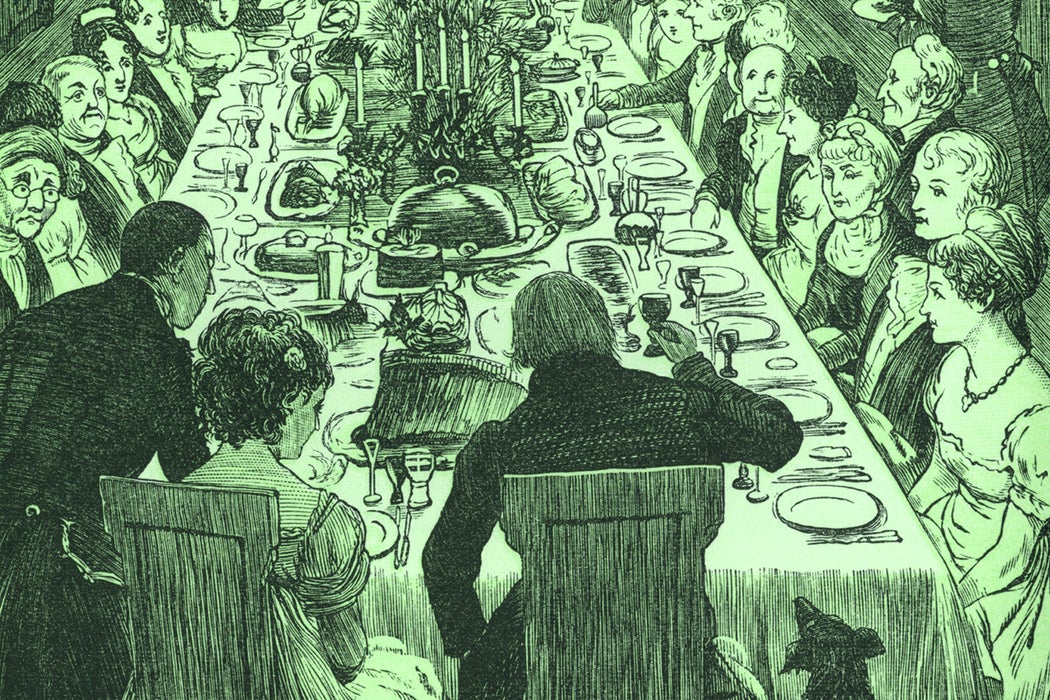What could be more Christmassy than a Dickensian feast? Victorians helped shape modern ideals of Christmas, and a cornucopia of Christmas goodies is part of the package. But where you might see plenty, Tara Moore sees famine—or at least a Victorian-era fear of it. She traces the rise of the published Christmas tale alongside both English nationalism and the perils of starvation.
Throughout the Victorian period, English authors used depictions of starvation to address political and social issues of the day. Hunger and starvation were seen as the eventual result of the overpopulation, poverty, and economic disparities in London and other cities, and as Christmas grew in popularity, so did the obvious difference between the haves and the have-nots.
During the 1840s, the specter of famine lurked over England. In Ireland, a million people starved to death during the potato famine, and England experienced an economic depression that lent the era the name “the Hungry Forties.” At the time, the so-called Corn Laws, which prohibited the import or export of grain, became increasingly unpopular. The laws’ opponents felt that the import restrictions, which were designed to inflate the price of British grain, made the country more susceptible to famine. (The laws were repealed in the late 1840s).
Those critiques showed up, believe it or not, in Christmas fiction like Henry and Augustus Mayhew’s The Good Genius That Turned Everything Into Gold. The book explores famine, starvation, and even bread tariffs through a Christmas allegory that, in Moore’s words, “shows the emptiness of England’s larder.”
A more recognizable example of Christmas starvation can be found in Charles Dickens’s classic A Christmas Carol. In the book, Ebenezer Scrooge faces the poverty of his employee Bob Cratchit’s family, and when he is visited by the Ghost of Christmas Present, two children named Ignorance and Want are concealed beneath the spirit’s robes. To Moore, this symbolizes the lie of Victorian society that Dickens fought to expose: starvation and poverty “concealed just beneath the patina of English middle-class institutions.” When the Ghost of Christmas Present meets Scrooge, he turns his room into a gigantic, well-stocked pantry bursting with English food instead of more international flavors. The Cratchits’ humble Christmas meal places the family firmly within an English identity, but shows that they are on the border of poverty and, thus, starvation.
Large quantities of food evoke starvation by contrast, suggests Moore, and the implication of books like A Christmas Carol is that being hungry at Christmas could jeopardize not just an individual’s class status, but their very Englishness.
“If Christmas literature seeks to correct a mishandled economy,” writes Moore, “it is through the curious currency of food.” Where we might see cozy narratives of family feasts and delicious tributes to a beloved holiday, Moore sees what she calls a “starvation parade”—a reminder that something deeper lurks behind the stereotypical images of plenty that mark Christmas celebrations even today.







